Twelve Epic Migratory Journeys Animals Take Every Spring
As temperatures rise and foliage blooms in the north, creatures from insects to whales set out for long treks across the planet
:focal(990x666:991x667)/https://tf-cmsv2-smithsonianmag-media.s3.amazonaws.com/filer/45/56/4556b542-a972-4f0b-95e5-eba93bf4d438/gettyimages-1052872052.jpg)
Spring is in the air, and the animal kingdom is on the move. Vernal migrations feature everything from fish and birds to big, shaggy mammals and tiny insects. These journeys are about as diverse as the species themselves, but Andy Davis, a University of Georgia ecologist and editor of the journal Animal Migration, says the mass wildlife movements have one important thing in common.
“It’s hard; it’s a taxing, energetically expensive journey,” Davis says. “It allows them to exploit different resources that they wouldn’t have been able to find if they’d stayed put, but a lot of animals die trying to complete migrations. So every year it’s a selective episode that helps to keep the population strong.”
If you are in the right spot on the planet, you might even catch some of the natural world’s most incredible migrators on the move.
Caribou
/https://tf-cmsv2-smithsonianmag-media.s3.amazonaws.com/filer/c8/23/c8237895-f85d-4ad3-ab37-c98f9c6e6c4a/gettyimages-589054720.jpg)
Famed for circumnavigating the globe on December 25, many reindeer (also known as caribou in North America) spend the rest of the year on an equally epic circuit, hoofing it to greener pastures.
Alaska is home to more than half a million caribou in seven migrating herds. The Porcupine Herd, some 170,000 animals strong, winters south of Alaska’s Brooks Range and in the Yukon but migrates north to the Arctic Coastal Plain for calving. That’s a distance of about 400 miles as the crow flies, but satellite tracking shows that the animals might actually zig and zag over 3,000 miles a year to complete the round trip.
Eastern migratory caribou herds (which have declined alarmingly in recent years) winter in Ontario and Quebec’s boreal forests but head for the tundra each spring. En route they may eat lichen, which a special strain of gut bacteria allows them to digest, but by the time they reach Hudson Bay in June, plants and grasses are plentiful.
Bar-Tailed Godwit
/https://tf-cmsv2-smithsonianmag-media.s3.amazonaws.com/filer/05/eb/05eb3036-4e7b-4e4e-8916-84bf4d3a30fc/bar-tailed_godwit.jpg)
Though their migration is a long one, layovers aren’t part of the bar-tailed godwit’s flight plan. “They will try to do the entire journey in one leg without stopping,” Davis says. “So it’s literally fly or die for them.”
The migration is the longest nonstop flight of any known bird—an incredible 7,000 miles. In spring in the Northern Hemisphere the birds leave New Zealand for an eight- to nine-day journey to the food-rich mudflats of the Yellow Sea off the coasts of China and Korea. The layover in Asia is the birds’ only respite before finishing the flight with a 3,700-mile leg to their summer breeding grounds in the Yukon and Alaska. In autumn they fly the route in reverse.
How do these godwits pull it off? “They have to put on so much fat that they become like butterballs at the stopovers,” Davis says. “It’s pretty crazy to think that you’re adding 50 percent of your body weight and then going on this marathon journey. But if you’re not going to stop on the way, then you’d better take it with you.”
Monarch Butterflies
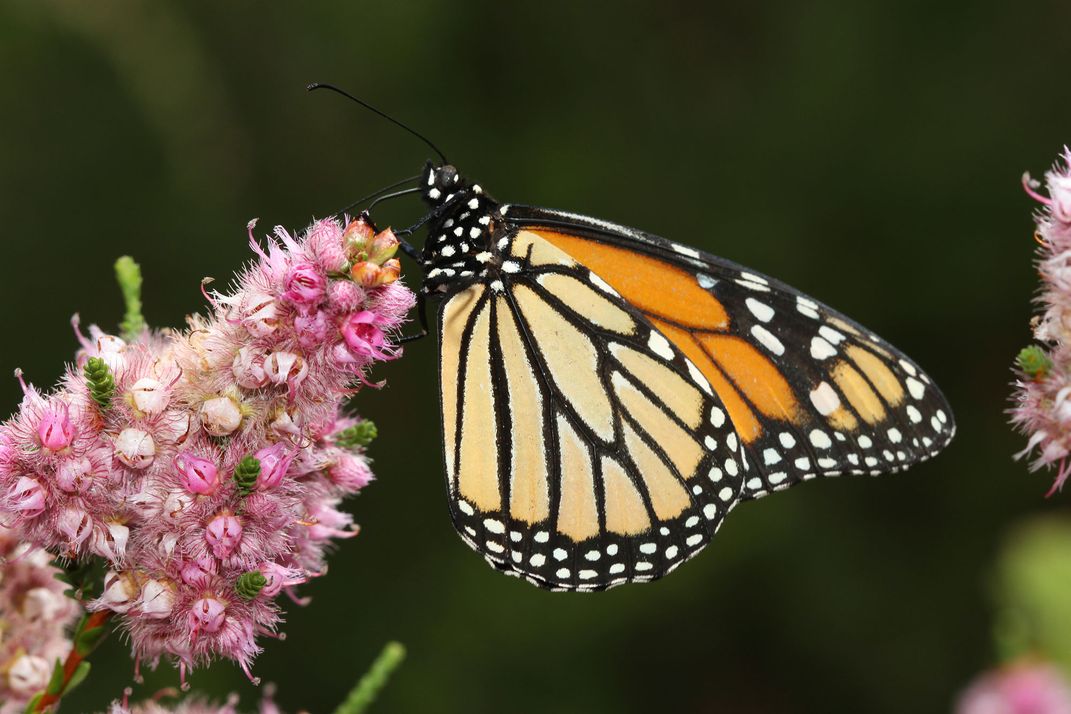
Spring finds a subspecies of these butterflies on a 1,900-mile northward journey from the mountain forests of central Mexico, where they winter by the millions, to countless backyards in the U.S. and Canada. When venturing north, the monarchs stop to lay eggs, which as larvae fatten up on milkweed before becoming butterflies and resuming a journey that requires four or five generations to complete.
In the fall, a single long-lived generation of monarchs retraces the entire southward route. The journey is so arduous that it actually makes the population physically distinct from non-migrating monarch groups, says Davis, who specializes in monarch butterflies.
“A lot of research shows how important this selective migration is in literally shaping the features of the monarch. Survival of the fittest is appropriate, but in the case of the monarch it’s really survival of the biggest. We have really good evidence that the smallest individuals just don’t make it, so the migration is promoting large size with monarchs in North America.”
Track the monarch migration with this interactive sighting map from the University of Wisconsin-Madison Arboretum.
Northern Elephant Seals
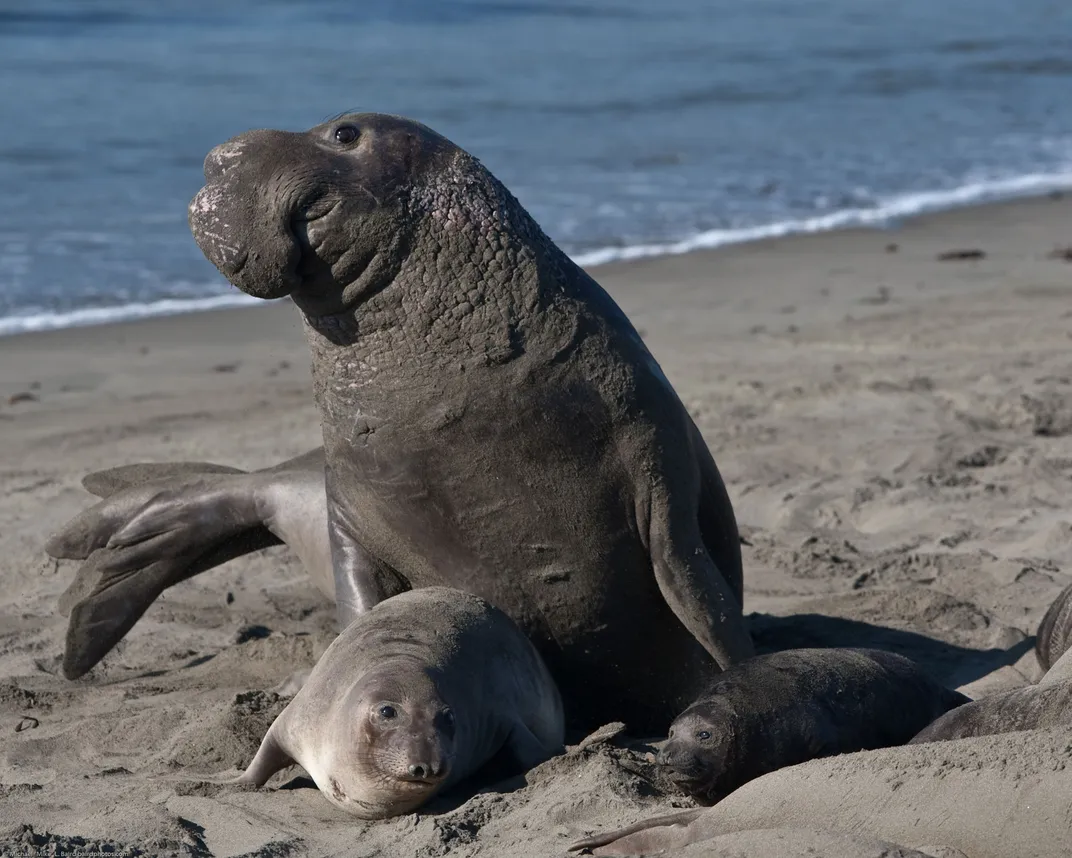
A familiar sight along the California and Baja coasts, these sedentary-looking mammals actually cover a lot of ground. Northern elephant seals come to shore twice a year, once to reproduce and once to shed old fur and skin during the molt. The rest of their days are devoted to two migratory feeding trips that account for eight to ten months away and sometimes over 12,000 miles of travel. Males head for the Gulf of Alaska, while females cruise westward into the Pacific.
California’s shorelines feature many popular sites for elephant seal spotters. In April, females and juveniles return to the beaches, joining the year’s weaned pups who were left behind by the males in March, and the animals can be seen molting for about a month. Females will head offshore again by the end of May for an eight-month feast, and males will return ashore to molt in June and July.
Atlantic Sturgeon
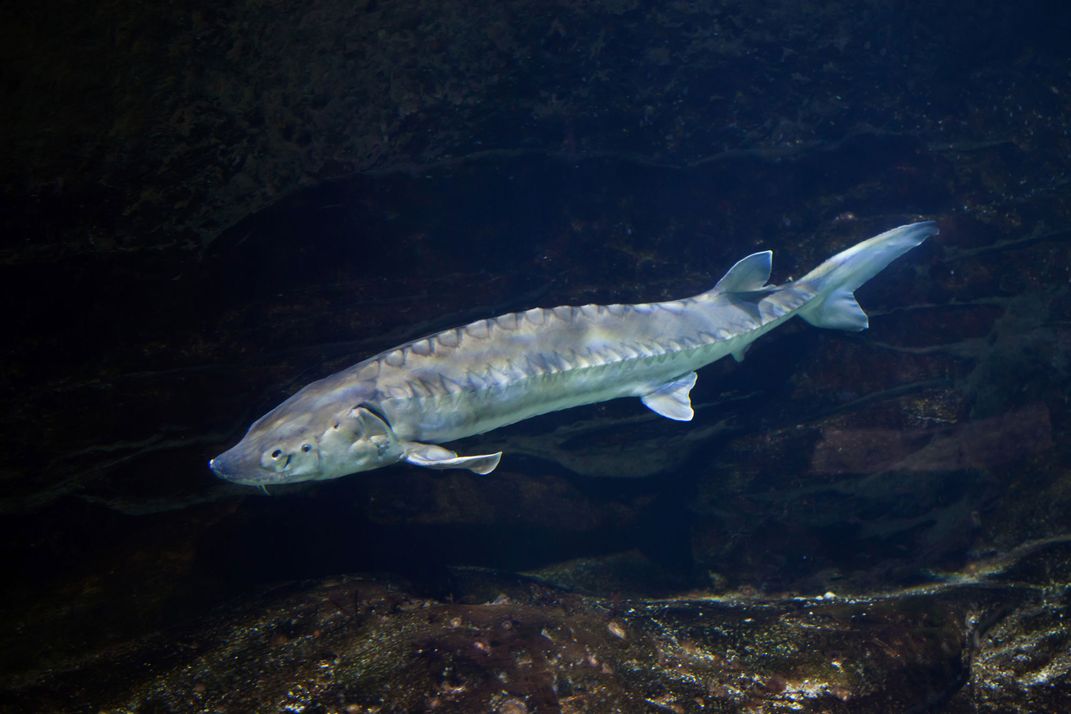
A prehistoric holdover, the sturgeon has been quietly plying familiar North American rivers from the Florida coast to Canada for perhaps 120 million years. The fish generally return from the ocean each spring to spawn, though some rivers host fall-spawning populations.
Today the fish face obstacles unprecedented since the dinosaur days, including fisheries that have decimated populations to harvest the millions of caviar eggs a single female can produce in a spring spawning event. All Atlantic sturgeon in the United States are currently listed as endangered or threatened. In the Delaware River, near once-prominent sturgeon fisheries, 180,000 adult females are thought to have spawned before 1890, according to the National Marine Fisheries Service (NMFS). Now the same waters are home to an estimated 300.
Atlantic sturgeon are now illegal to catch, and they are not easy to spot, but scientists with sonar equipment recently captured images of a 14-foot giant swimming in the Hudson River near Hyde Park. That encounter provides some hope that protection measures can help the slowly-reproducing species bounce back to their former glory.
Ruby-Throated Hummingbird
/https://tf-cmsv2-smithsonianmag-media.s3.amazonaws.com/filer/dc/d2/dcd23af4-94dd-4d74-adc5-ef109e557194/gettyimages-535790153.jpg)
These tiny birds weigh about as much as a U.S. nickel, yet their migratory journey includes an incredible flight covering some 1,400 miles. The birds can beat their wings a nearly imperceptible 53 times per second, helping them cover a lot of ground.
Ruby-throated hummingbirds spend the winter in Central America but begin the trek north each spring to a warm-weather range. They can be seen in woods and flower gardens across much of North America east of the Rocky Mountains. These beloved birds are familiar at many feeders during the spring season, and their return is a welcome sign of warm weather in the northern latitudes.
Dragonflies
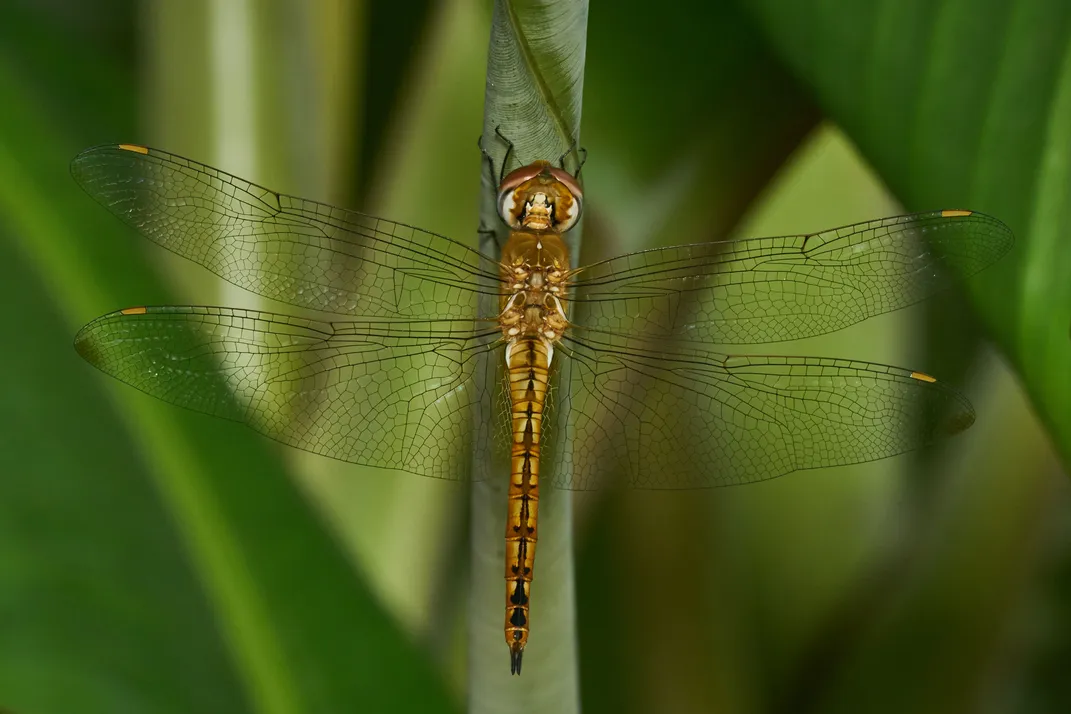
One tiny dragonfly punches way above its weight in the world of long-distance flight. The ‘globe skimmer’ (Pantala flavescens) is a champion migrator among insects, travelling more than 11,000 miles while following seasonal rains to lay eggs in ephemeral pools. But dragonflies don’t cover all that ground alone.
“They migrate by a sort of relay race, where multiple generations complete the journey over several months,” Davis says. “Finally they end up where they are supposed to be, but it’s not a single individual completing the migration. It’s amazing because every generation has never been to where it’s going, yet they still know where to go.”
The dragonflies’ multigenerational journey takes them across the ocean from Africa to India and back, but outliers could venture elsewhere. The genetics of this migrating group are extremely similar to dragonfly populations in Asia and the Americas, so some scientists suspect they travel so widely that their gene pool population could be a global one. Green darner dragonflies (Anax junius) make a similar journey north from Mexico and the Caribbean to the Upper Midwest, New England and Canada.
Arctic Tern
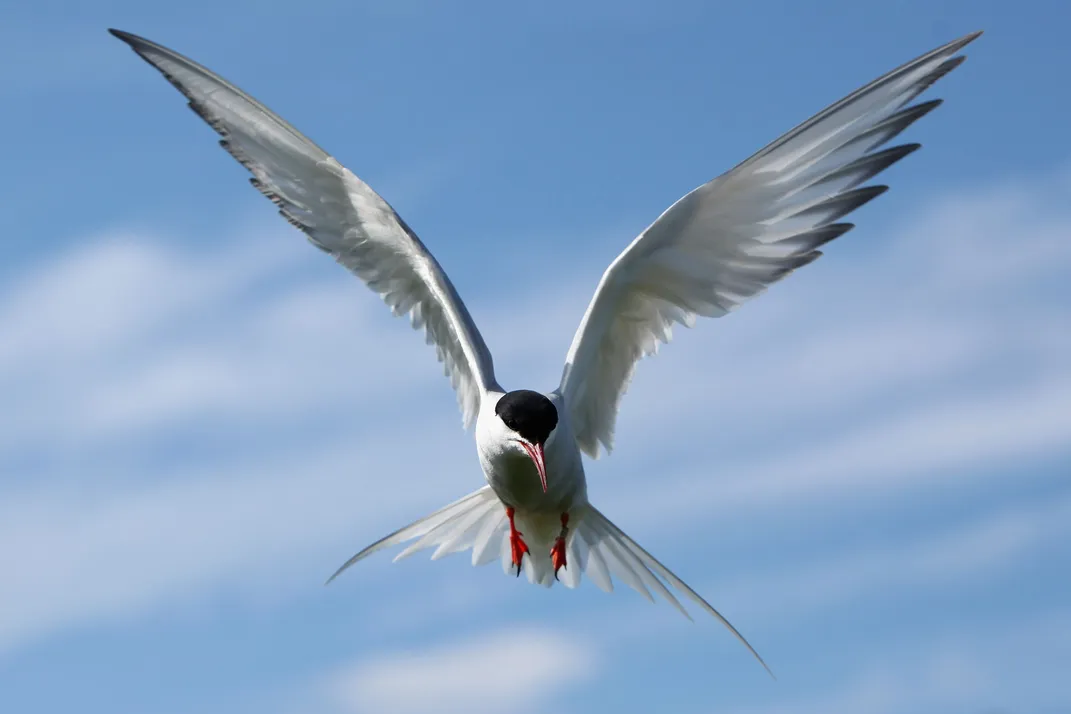
No animal on Earth migrates farther than the Arctic tern—nor could they, as these birds fly from pole to pole. Scientists using tiny transmitters have tracked Arctic terns on a 44,000-mile route, zigzagging each spring from Antarctica to Africa, South America, and then up the North Atlantic to Greenland. Over a 30-year life, a tern might fly an incredible 1.5 million miles on these annual journeys.
“They literally go from one end of the planet to the other, so it’s always been the king of the migrants in the animal world,” Davis says. “They are physiologically adapted to do this. Their wings fly and glide with minimal effort. We think it must be crazy, but they are built to take on this journey. It’s a species where if you took the migration away from them they’d be in trouble, because they aren’t built to do anything else.”
Most of their migratory flight is far offshore, but the birds can be seen at breeding grounds along the Atlantic and Pacific coasts, from New England and Washington state north.
Emperor Penguins
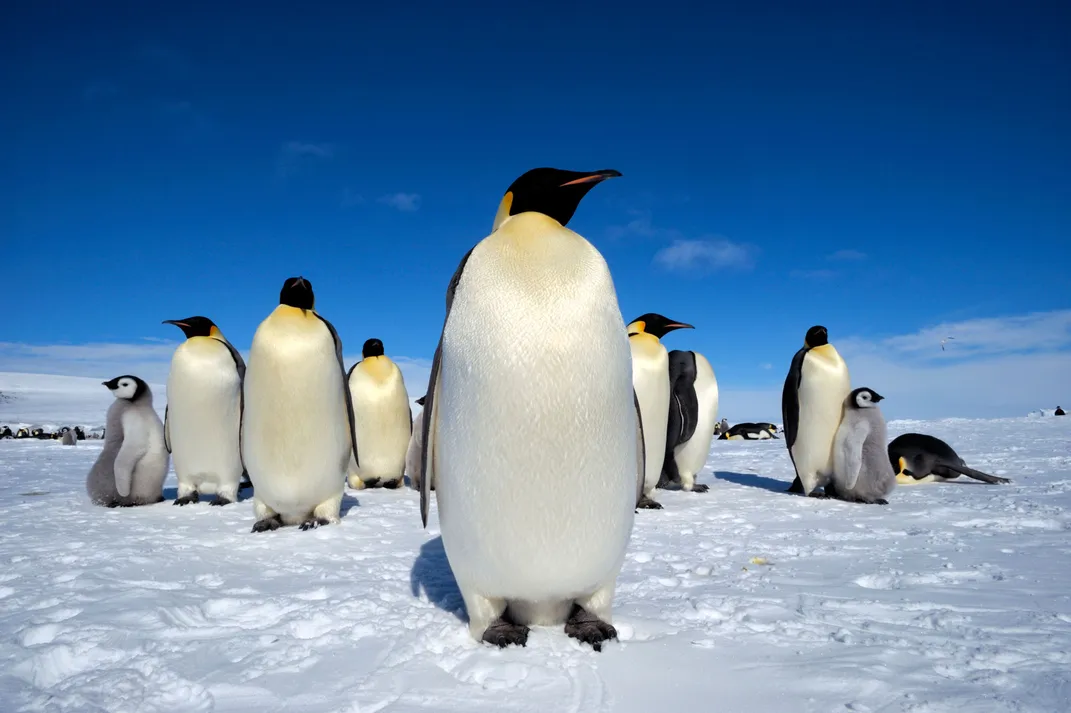
April means the onset of winter in Antarctica, and with the mercury plunging in thermometers, the emperor penguins are on the move. The famous march of these penguins isn’t aimed at seeking warmer climes, however, as is the case for so many snow bird species. Instead, these hardy survivors trek doggedly toward the frigid continent’s interior, 100 miles or more, to reenact each colony’s incredible cycle of life.
Emperor penguin colonies are now being tracked via satellite to monitor populations. Males forgo eating to huddle up together and keep eggs warm, despite extreme conditions of minus 60 degrees Celsius and 100 mph winds. Meanwhile, the female penguins head off to the open sea for an extended fishing trip that lasts about two months. Upon their return, they’ll have plenty of food to regurgitate for the newly hatched chicks. The males then begin their own trek to the ocean waters for a well-earned feast.
Leatherback Sea Turtles
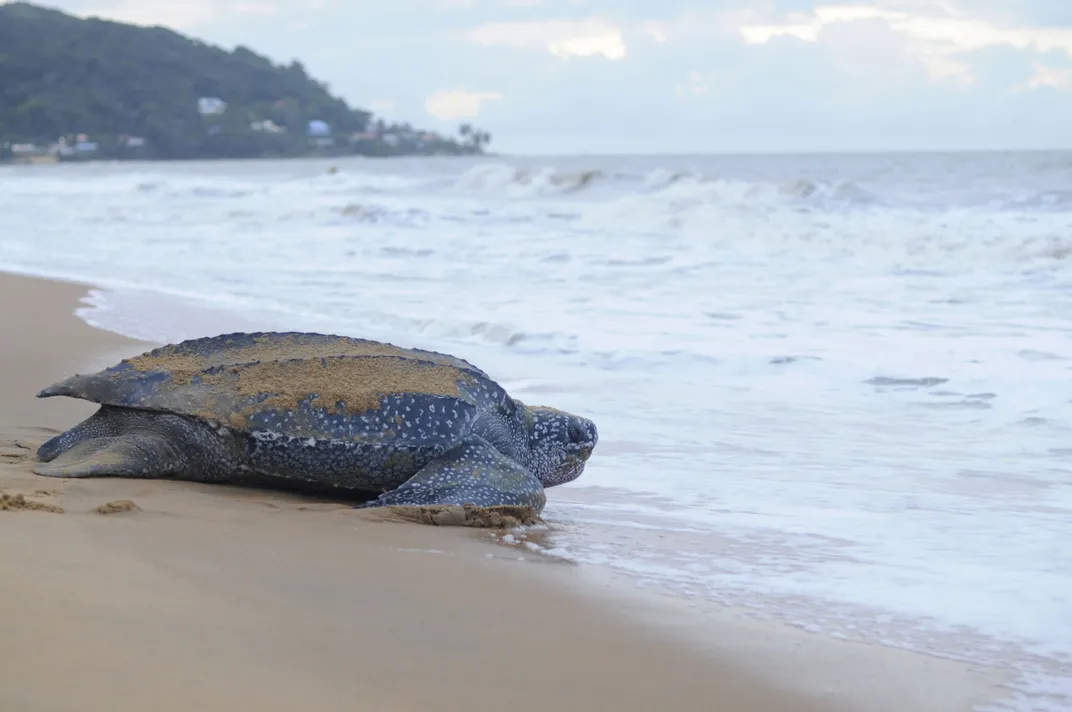
Leatherback sea turtles love jellyfish. In fact, they eat so many of them that they can tip the scales at up to 2,000 pounds. To find enough of their squishy sustenance, the world’s largest turtles migrate between tropical beaches where they nest and the temperate waters where their prey on spawns—swimming 10,000 miles a year or more and diving to depths of nearly 4,000 feet.
The leatherbacks feeding off North America’s Pacific Coast migrate back to nesting grounds as far as Indonesia and the Solomon Islands, an incredible journey that can take 10 to 12 months. Atlantic leatherbacks also exhibit some serious wanderlust. Satellite tracking has revealed turtles nesting in French Guiana and foraging as far north as Newfoundland, and you can follow your favorite animals online through the Sea Turtle Conservancy.
Satellite telemetry studies hypothesize that these ocean explorers may guide themselves across the ocean by following the sun, visual shoreline cues, or even some type of magnetic compass.
Gray Whales
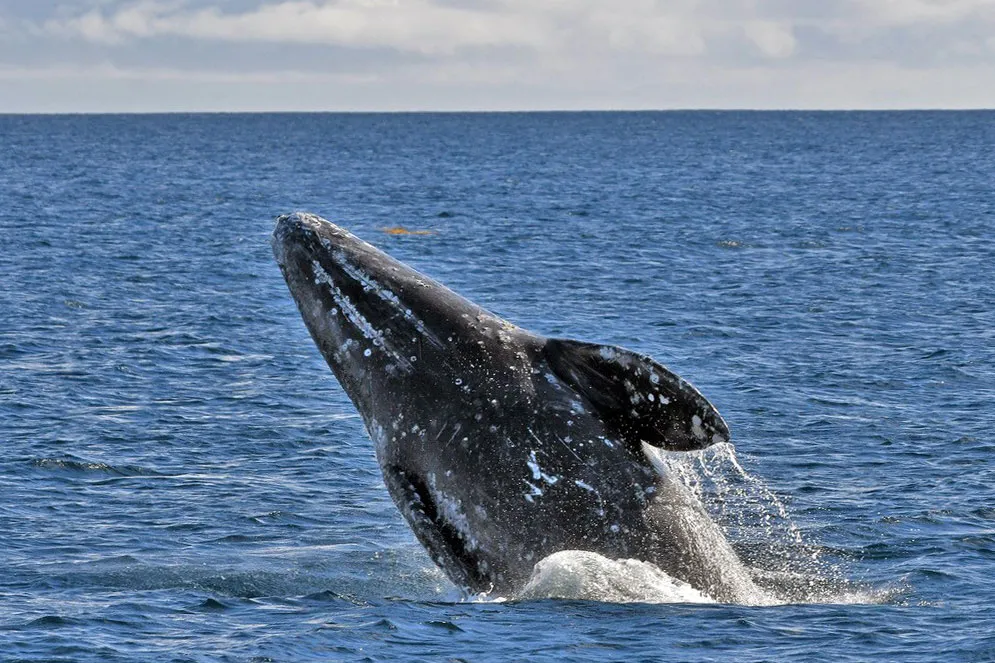
The gray whale is a familiar site along North America’s Pacific Coast. Its 10,000- to 14,000-mile round trip is among the longest migrations in the mammalian world. The spring journey from Baja California, Mexico, to the rich feeding grounds of the Arctic’s Bering and Chukchi seas takes two to three months. In the north, a smorgasbord of amphipods awaits, and the whales feed for up to 20 hours a day.
During the trip north, which begins in April, mothers and calves tend to remain quite close to shore where they are often spotted rising to breathe. March 2019 was a banner month for whale sightings in southern California, and the animals can be spotted all along their trip up the coast.
Wildebeest
/https://tf-cmsv2-smithsonianmag-media.s3.amazonaws.com/filer/45/56/4556b542-a972-4f0b-95e5-eba93bf4d438/gettyimages-1052872052.jpg)
Perhaps the world’s greatest spectacle of land mammal migration, Africa’s annual wildebeest trek lives up to all the superlatives. After wintering and calving on Tanzania’s Serengeti, more than 1.2 million of the animals simply get up and go in the spring. During a trek of 1,000 miles, the migratory mob embraces a lifestyle that even other wildebeest herds avoid.
Many wildebeests won’t survive to reach the grassy plains of Kenya’s Masai Mara, much less complete a clockwise Serengeti circuit by returning south in November. The animals can be picked off by predators such as crocodiles or drowned at river crossings. They die by the thousands on the arduous journey.
A Serengeti safari that includes the wildebeest migration can be the trip of a lifetime. The migration is actually a year-long circuit, which means the animals are generally moving about somewhere. But Africa’s rains drive a migration schedule that’s heralded by males crying out to mate. Around the end of March, the great herd and their recently born calves begin to head north. By July they’ll congregate for the famous river crossings, reaching Masai Mara by October only to begin the trek back south when November’s storms arrive. Even if you can’t make it out to see the migration, you can follow the animals virtually with the citizen science effort Snapshot Serengeti.